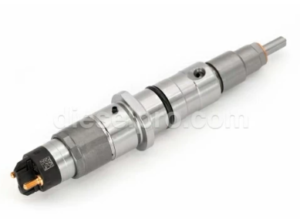
Introduction
The Cummins C Series engines (6C, 6CT, 6CTA) have long been recognized for their reliability, fuel efficiency, and performance. However, as emissions regulations evolved in the early 1990s, Cummins had to adapt its engine designs to meet new environmental standards. The 1991 and 1994 certification levels marked significant milestones in the regulation of diesel engine emissions, focusing on reducing nitrogen oxides (NOx), particulate matter (PM), carbon monoxide (CO), and hydrocarbons (HC).
Parts Catalog for Cummins 6C Marine Engine
Parts Catalog for Cummins 6CT Marine Engine
Parts Catalog for Cummins 6CTA Marine Engine
This guide explores:
- Emission Standards and Compliance Differences
- Modifications Required for Each Certification Level
- Maintenance Implications for Both Certifications
Understanding these differences is critical for fleet managers, mechanics, and operators who manage engines across different regulatory eras.
1. Emission Standards and Compliance Differences

A. Background on Emission Regulations
The U.S. Environmental Protection Agency (EPA) implemented stricter emissions standards in the early 1990s to combat air pollution from diesel engines. These standards targeted reductions in:
- Nitrogen Oxides (NOx): Major contributors to smog and acid rain.
- Particulate Matter (PM): Fine particles that affect respiratory health.
- Carbon Monoxide (CO): A colorless, odorless gas harmful in high concentrations.
- Hydrocarbons (HC): Unburned fuel contributing to smog formation.
B. 1991 Certification Level
The 1991 standards focused primarily on reducing PM emissions and laid the groundwork for controlling NOx. Key targets included:
- NOx Limit: 5.0 g/bhp-hr (grams per brake horsepower-hour)
- PM Limit: 0.25 g/bhp-hr
- CO Limit: 15.5 g/bhp-hr
These standards led to improvements in fuel injection timing, combustion efficiency, and the introduction of basic exhaust gas recirculation (EGR) systems.
C. 1994 Certification Level
The 1994 standards were significantly stricter, pushing for deeper cuts in NOx emissions while maintaining PM reductions. Key targets included:
- NOx Limit: 4.0 g/bhp-hr (20% reduction from 1991)
- PM Limit: 0.10 g/bhp-hr (60% reduction from 1991)
- CO Limit: 15.5 g/bhp-hr (unchanged)
This required advanced technologies such as:
- Improved EGR systems
- Turbocharging with aftercooling
- Optimized fuel injection systems
D. Key Compliance Differences
| Parameter | 1991 Certification | 1994 Certification |
| NOx Emissions | 5.0 g/bhp-hr | 4.0 g/bhp-hr |
| PM Emissions | 0.25 g/bhp-hr | 0.10 g/bhp-hr |
| CO Emissions | 15.5 g/bhp-hr | 15.5 g/bhp-hr |
| Technology | Basic EGR, mechanical injection | Advanced EGR, electronic injection |
| Fuel Efficiency | Moderate | Improved through optimized combustion |
2. Modifications Required for Each Certification Level

A. Modifications for 1991 Certification Engines
- Fuel Injection Timing Adjustments:
- Earlier injection timing to reduce PM but may increase NOx.
- Use of mechanical injection pumps with basic calibration.
- Combustion Chamber Design:
- Minor modifications to promote better fuel-air mixing.
- Minor modifications to promote better fuel-air mixing.
- Exhaust Gas Recirculation (EGR):
- Basic EGR systems introduced to begin addressing NOx.
- Limited control over EGR flow rates.
- Turbocharger Optimization:
- Some engines incorporated basic turbochargers for improved air intake.
- Some engines incorporated basic turbochargers for improved air intake.
B. Modifications for 1994 Certification Engines
- Advanced EGR Systems:
- Enhanced EGR valves with electronic control for precise NOx reduction.
- Improved cooling systems to handle increased EGR flow.
- Electronic Fuel Injection (EFI):
- Transition from mechanical to electronically controlled injection.
- Allows for precise fuel metering and injection timing.
- Turbocharging with Aftercooling:
- Charge air coolers (aftercoolers) reduce intake air temperatures, increasing efficiency.
- Better control of combustion temperatures to reduce NOx.
- Crankcase Ventilation Systems:
- Enhanced systems to reduce HC emissions from crankcase blow-by gases.
- Enhanced systems to reduce HC emissions from crankcase blow-by gases.
- Optimized Combustion Design:
- Redesign of piston bowls and cylinder heads for improved combustion efficiency.
- Redesign of piston bowls and cylinder heads for improved combustion efficiency.
C. Retrofit Options for Older Engines
For operators seeking to upgrade 1991-certified engines to meet stricter emissions standards:
- EGR Retrofits: Installing aftermarket EGR kits to improve NOx control.
- Fuel System Upgrades: Transitioning to electronically controlled injectors.
- Turbocharger Upgrades: Replacing older turbos with modern, more efficient models.
3. Maintenance Implications for Both Certifications

A. Maintenance for 1991 Certified Engines
- Simpler Systems, Less Complexity:
- Predominantly mechanical systems require basic diagnostic tools.
- Routine valve adjustments and injector calibrations are common.
- Fuel System Maintenance:
- Mechanical injectors need regular servicing to maintain fuel efficiency.
- Fuel filter changes are critical to prevent injector fouling.
- Exhaust System Checks:
- Basic EGR systems may clog over time, requiring cleaning.
- Regular inspection for exhaust leaks and soot buildup.
B. Maintenance for 1994 Certified Engines
- Increased Complexity with Electronic Controls:
- Requires diagnostic software to read fault codes and calibrate electronic components.
- Sensors (temperature, pressure, O2) need regular checks and calibration.
- EGR System Maintenance:
- Regular cleaning of EGR valves and coolers to prevent clogging.
- Monitoring for EGR flow efficiency with diagnostic tools.
- Turbocharger and Aftercooler Maintenance:
- Inspect for boost leaks, oil contamination, and bearing wear.
- Clean the aftercooler periodically to ensure proper airflow.
- Fuel System Diagnostics:
- Electronic injectors require more precise diagnostics.
- Fuel pressure sensors and regulators need calibration.
C. Key Differences in Maintenance Requirements
| Aspect | 1991 Certification | 1994 Certification |
| Diagnostic Tools | Basic mechanical tools | Electronic diagnostic software |
| EGR System | Simple, manual adjustments | Advanced, electronically controlled |
| Turbocharger Maintenance | Basic inspections | Requires boost pressure diagnostics |
| Fuel System | Mechanical injectors | Electronic injectors with sensors |
| Cost of Maintenance | Lower | Higher due to complex components |
Conclusion
The transition from 1991 to 1994 certification levels for Cummins C Series engines represented a major shift in diesel engine technology, driven by stricter emissions regulations. While 1991-certified engines are simpler and easier to maintain, 1994-certified engines offer improved fuel efficiency, lower emissions, and better performance thanks to advanced technologies.
Understanding the differences in emission standards, the modifications required, and the maintenance implications for each certification level is essential for maximizing engine performance and ensuring regulatory compliance. Whether you’re operating older 1991 engines or maintaining newer 1994 models, proper care and adaptation to these evolving standards will keep your Cummins engines running efficiently for years to come.
Parts Catalog for Cummins 6C Marine Engine
Parts Catalog for Cummins 6CT Marine Engine
Parts Catalog for Cummins 6CTA Marine Engine



 Free US Calls: 1-888-433-4735
Free US Calls: 1-888-433-4735 International: 305-545-5588
International: 305-545-5588